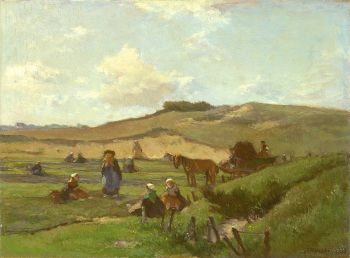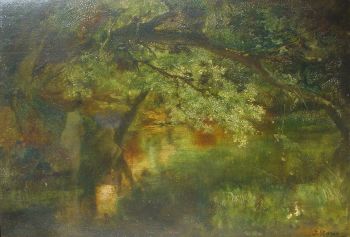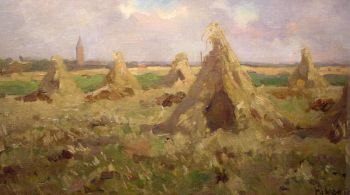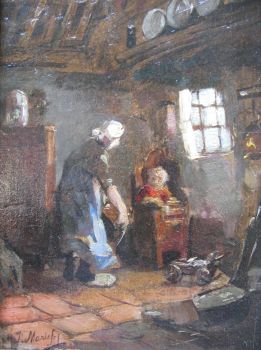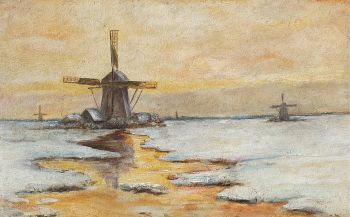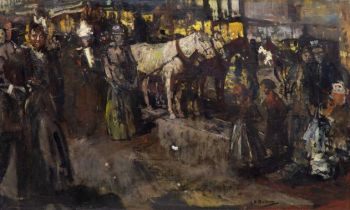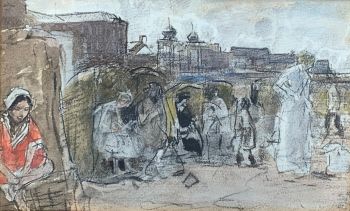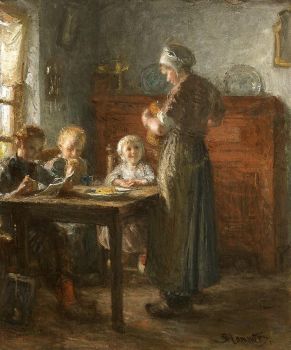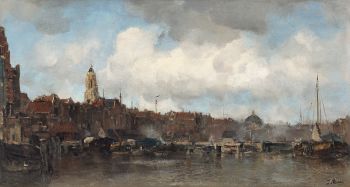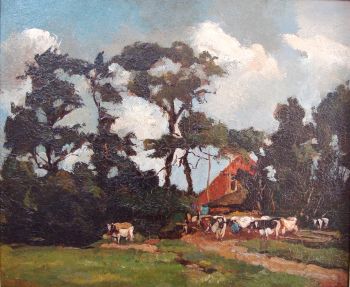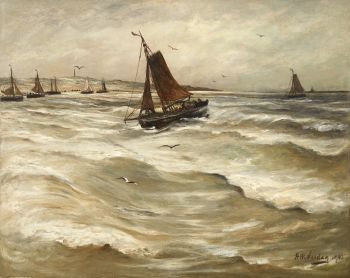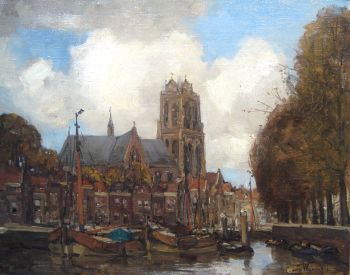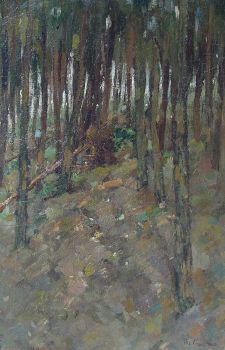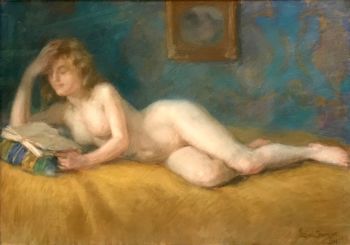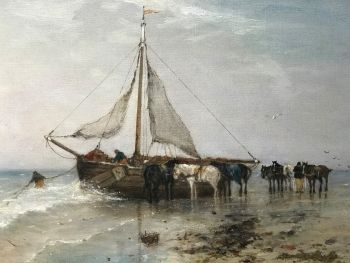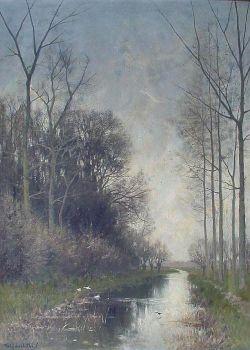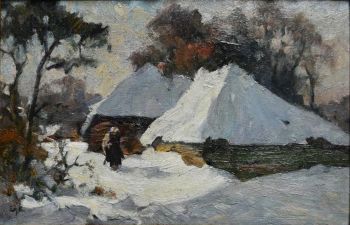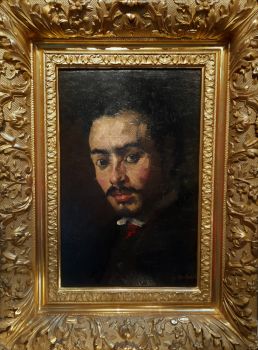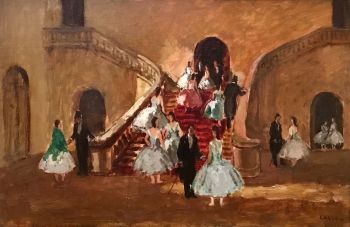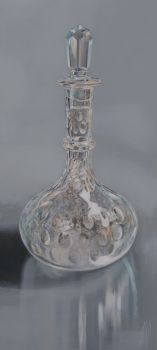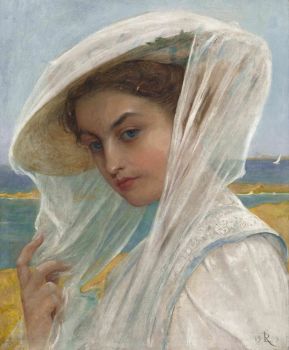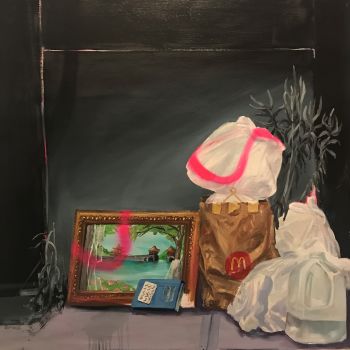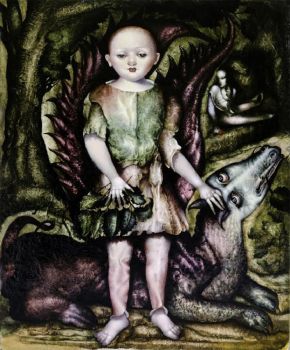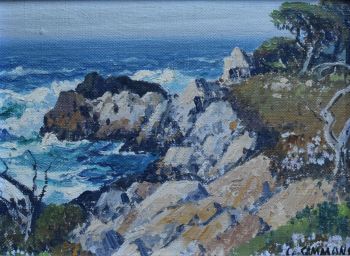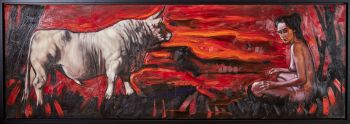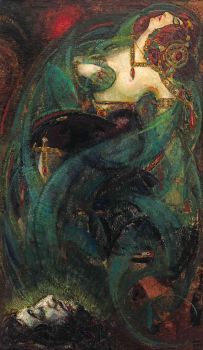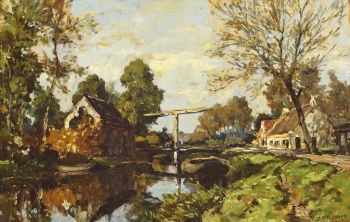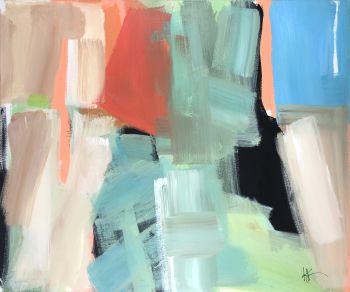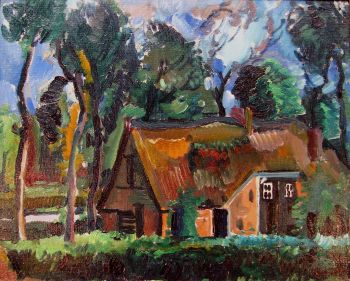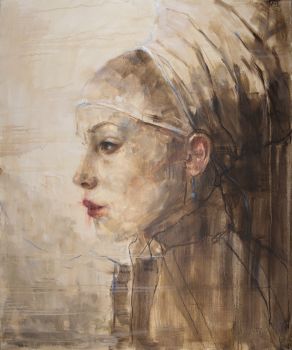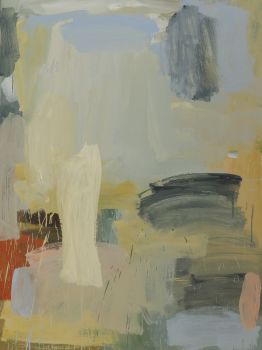About the artist
Willem Maris (The Hague, 18 February 1844 – ibid., 10 October 1910) was a Dutch painter, draftsman, etcher and watercolourist. He was best known for his paintings of landscapes with animals and was co-founder of the Hollandsche Teekenmaatschappij.
Willem Maris was born as one of six children of Mattheus Maris and Hendrika Bloemert, in the Zuilingstraat in The Hague. Later the family moved to the Lange Lombardstraat. In 1872 he married Maria Jacoba Visser (1841–1889) in The Hague, with whom he had a son, Simon Willem, born in 1873. After Maria's death he remarried Johanna Anthonia Gijsberta van Bijlevelt, with whom he had two daughters: Johanna Wilhelmina (1891-1958) and Elisabeth Florence Amalia (1894-1926).
Willem Maris was the youngest son of Mattheus Maris and Hendrika Bloemert. He received his first drawing lessons from his older brothers Jacob and Matthijs. He also took evening classes at the Hague Academy, where he also received advice from the famous animal painter Pieter Stortenbeker.
Maris developed into a gifted animal artist and found inspiration in Oosterbeek and Wolfheze, where he further developed his talent for landscape painting. In 1855 he met the painter Anton Mauve, an important influence on his work. His first exhibition took place in 1863 in The Hague. In 1865 he travelled with Bernard Blommers through the Rhine States and later he also visited Norway.
From 1869 Maris settled permanently in The Hague, where he died at the age of 65. He was buried in the cemetery Oud Eik en Duinen. His son Simon followed in his footsteps as a painter and Simon's son Thijs wrote a book about the Maris family.
Willem Maris was best known for his nature paintings, often with cows at a pond or ducks at the edge of a ditch. His work is reminiscent of the landscapes of the French painter Camille Corot. He is considered to belong to the Hague School. Although he was the youngest of the three Maris brothers, his work was the furthest removed from both realism and impressionism. However, he is considered by some to be the most realistic painter of the three. Others consider him to be the most impressionistic, with his statement as evidence: "I do not paint cows, but light."
In honor of the brothers Jacob and Willem Maris, a monument stands behind the Peace Palace in The Hague. The inscription reads:
"Artists, worthy of Rembrandt's country."

